CEOs Talk Workplace: Interview with Cresa's Jim Underhill
This article originally appeared on Work Design Magazine.

Bob Fox: Tell us a bit about Cresa.
Jim Underhill: We are the largest advisory firm in the world that exclusively represents tenants and occupiers of real estate, with 80 locations globally – about two-thirds in the US. We love being a niche player and sleep well at night knowing that our allegiance is solely to occupiers. We don’t face the conflicts that some of our competitors do who represent landlords. Before I took this position as CEO, I spoke to a few Cresa clients and asked them why they hired Cresa. They said they love the company’s passion and that Cresa does one thing and they do it exceptionally well. They felt Cresa employees take pride in their work and care about results. That’s meaningful. We are a classic boutique story.
Bob: Can you share some of the demographics of the company?
Jim: We have about 1,100 people with about two-thirds being client-facing. Our range of services starts with consulting and strategic planning. We work primarily with C Suite clients, and a large part of our role is to help them understand their people – what will promote recruitment and retention, efficient working, etc. That’s what space is all about. We do consulting work to understand our client’s business’ and where they’re trying to take them. We then translate that into a real estate strategy and ultimately find the right space and location for them to operate in. We also have project management services and are able to help clients through the complete life cycle of a project, including post-occupancy maintenance through our facilities management capabilities.
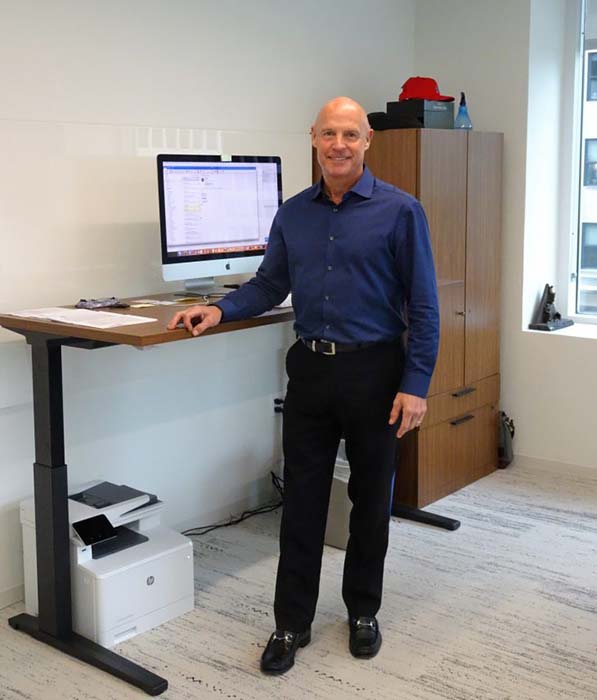
Bob: Can you give us some insight into the culture of the organization?
Jim: We have a highly collaborative culture. I would say it’s the most collaborative place I’ve worked in my career. It’s interesting because when I was looking at Cresa before I took my position, the culture was actually one of the things that attracted me to the firm. I could feel it even at the board level. The culture stems from the company’s roots, with each office having been independently owned at one point. Our partners build our offices. I think when someone owns a business, the treat it differently than if they are just an employee of a larger firm. About 2 years ago, we merged ownership of the offices into one company, but we are still 100 percent employee owned. We have no outside investors. Another big part of the culture is people knowing that they can have an impact and that we are open to suggestions. I think that permeates the organization – it’s empowering. It’s powerful when you get culture to a critical mass. It’s something that starts to become self-perpetuating.
Bob: You just moved into this office that you designed for yourselves. What’s the story and what were your goals for the space
Jim: There were a number of objectives. Clearly, we considered productivity and functionality aspects. But before getting to that, we had to consider that the company itself had gone through a transformation. Part of that was the merging of the independent offices and recognizing that it was time for Cresa to fully launch and fulfill our potential. As part of this transformation, we did a re-branding exercise. It wasn’t just putting new paint on the walls – we talked about who we are, our identity and how we see ourselves as innovative rebels in the industry. We aren’t looking to be like our competitors. We have our own identity and we wanted to make sure our space captured that as well.
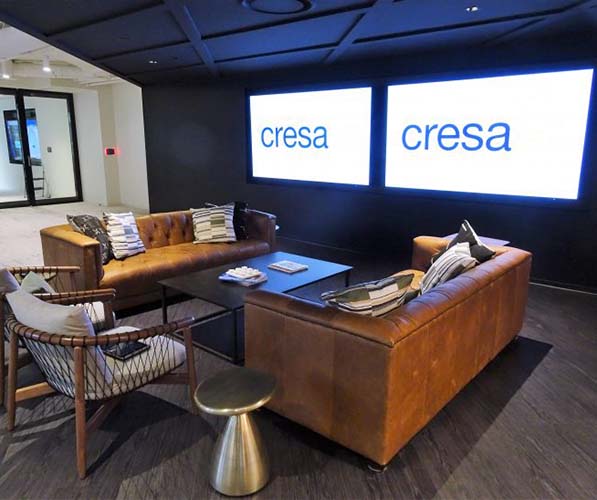
Bob: Can you give us an example of how that identity is embodied in the space?
Jim: You’ll notice that right when you walk through the front door! The entry area is a statement for any company. We wanted it to have a bit of an edgy image to it – with the black floors, and comfortable lounge areas. We tried to create places within the space so that different types of working, meetings, and conversations can happen. One thing that I’m seeing is that people are never stuck at their desks. It makes me smile when I see a group working at the high-top tables together. I think we captured the edginess, and that we got the right mix of open and private space for our people. On a functional basis, it has been very successful.
Bob: Was there an overarching goal that you had when you started this process?
Jim: We wanted a space that would reflect well as a corporate headquarters. This space functions in two ways – as our headquarters office and our local DC office, so it had to look the part and have the dual functionality. The common ground between the two is that we wanted it to be a place that we all look forward to coming to everyday. I wanted us to feel proud inviting friends, clients, host events – and not just have it be an inward space, but an outward space for the community.
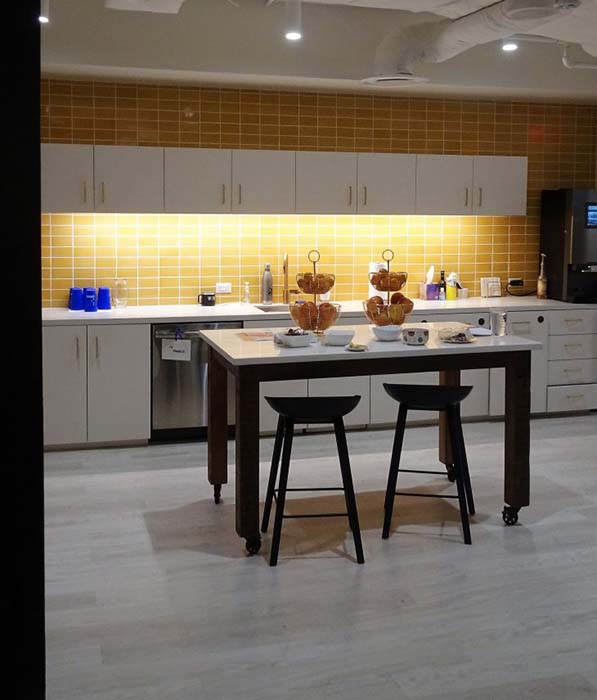
Bob: You’ve mentioned that Cresa is the rebel disruptor of the industry. In your position as the CEO of a commercial real estate firm, was there anything that you wanted to try to do with the space to position yourselves in the market?
Jim: This space is important for us, not just for the performance of our employees, but also to show prospective clients. We want them to come see the type of space we can create for a company. It might not be the right space for everyone, but I often hear that we nailed it. Maybe the message is that companies shouldn’t compromise. Space is really important since it connects people and culture. You’ve got to have the right people, but when you get them in the right space together, it’s an accelerator and makes the team better.
Bob: It sounds like you’ve been strategic about the way you’ve been thinking about your space. You’re using the space to grow your business. Can you share some thoughts about that?
Jim: Our people are more productive here than they were at our previous space. One reason is because of the feel-good factor of coming in. We all love coming here. There’s also a collaborative benefit – people are running into each other in a way they weren’t previously and exchanging ideas. I have no doubt that we will recruit more effectively into this space, because people want to be here. As important as recruitment is, retention is equally important. Our employees are much happier here. Most importantly, this space reflects positively to clients. They can see that we created a great solution. As their advisor, that’s our goal – to help them create a phenomenal outcome for their business.
Bob: I know you’ve just moved in here but where do you think you’ll get the biggest value of the space?
Jim: I wouldn’t answer with a physical aspect – I would come back to our people. I think job satisfaction and performance, and the messaging they will take out into the community, is far and away the best benefit.
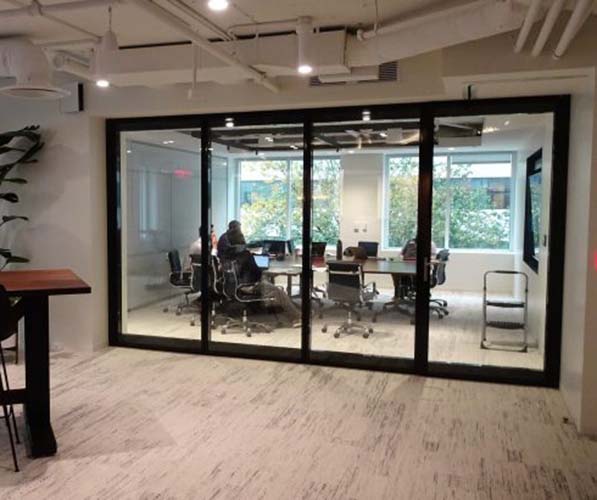
Bob: So, it’s that experience and the communication of that.
Jim: The good news is that I don’t have to promote it – it’s natural. I don’t have to send a memo out saying go out and tell everyone you love your office!
Bob: You mentioned the concept of unassigned workspace. What’s your thinking behind that?
Jim: From a change management perspective, we went from a 50/50 open/closed office to an entirely open plan. We felt that during the transition it was important for people to know they had an assigned space. Over time we feel we might not need that. We have so many other spaces for people to work in that their assigned space isn’t as important anymore. From a business standpoint, this could allow us to have far more people working in the space.
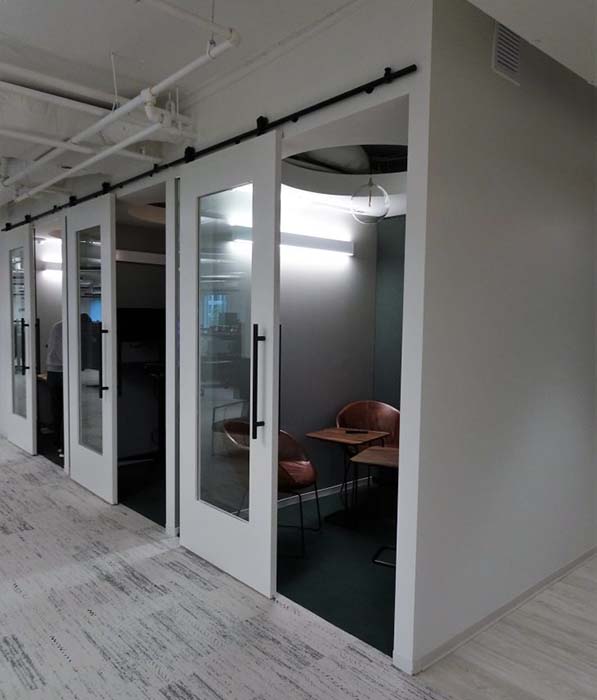
Bob: I think it’s great that you’ve shared your story about the leadership side of this process but I’m curious to understand what you’ve learned going through this. How would you lead your clients through the deal portion?
Jim: Some people look at us and assume that we just get the lowest reno rate for clients and that’s it. That’s not true. Our job is to help our clients understand the alternatives and find the best location to advance their business goals. We do studies to decide between neighborhoods like Georgetown and the West End (of D.C.). Recruiting demographics change depending on an office’s location in a city. In our situation, we’re not in an expensive building, and we’re not overcrowded. We realize that people drive our business and our employment expense is the biggest that we have. We are willing to pay more for our space and have a lower utilization rate because we think that the performance of our people will be higher, as well as recruitment and retention. Our business is about finding the right solution and getting the best deal, not necessarily finding the lowest cost real estate.
Bob: You mentioned location and recruitment, but are there other aspects of the space that you see contributing value to the organization?
Jim: Amenities are important. It’s passé at this point, but we do have a beer tap. It’s not so much about the beer, but rather that we like to spend time socializing with each other. Rather than heading home, people are hanging around longer and grabbing a beer with colleagues. We’ve created a space that people enjoy being in. It extends to the building we’re in as well. We have a great fitness center, and a population that cares about wellness.
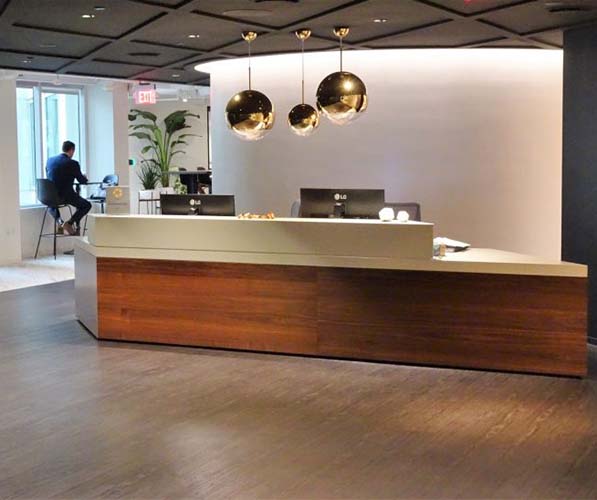
Bob: In your role as CEO, you’re trying to grow Cresa. How is the workplace helping you to do that?
Jim: I’ve had two different recruits come in this past week, from two different cities, that I would not have invited in previously. This office reflects who we are as a firm and that’s a big part of what they’re buying into. People want to know the personality and culture of a firm, and I can point to things in our space and say, “this is what our Cresa office standard will be”. It will have a local flavor to it, but there will be a lot of similarities as well.
Bob: Where are you most willing to spend money on your space?
Jim: Technology, because it enables mobility, and mobility is critical to the collaboration that is so important to us. We invested in this space to make that happen.